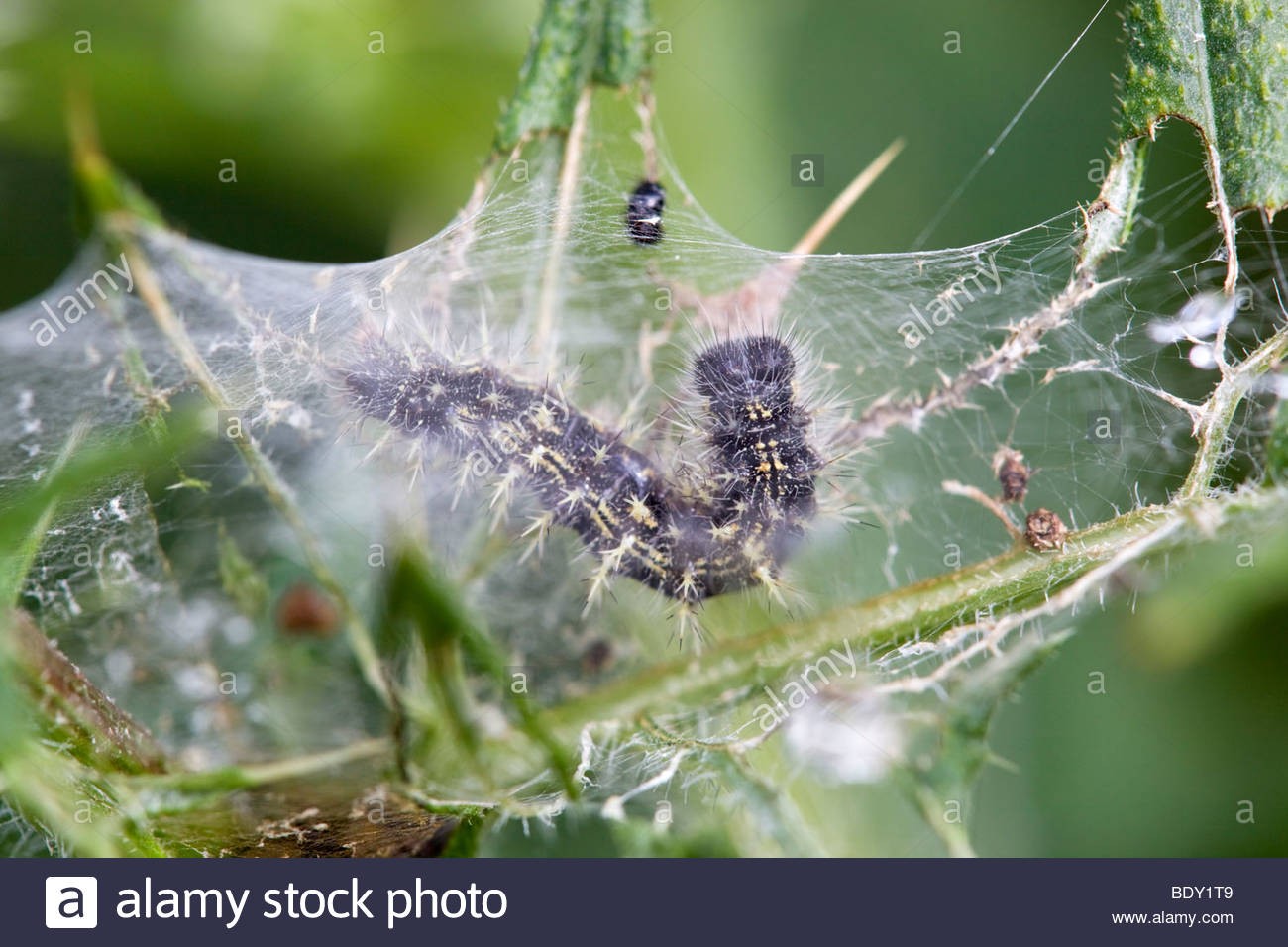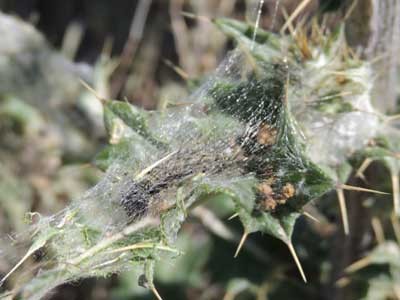Originally posted by hobbyfrmr
View Post
Announcement
Collapse
No announcement yet.
Does NFU represent the average farmer? Some interesting characters on their board.
Collapse
Logging in...
Welcome to Agriville! You need to login to post messages in the Agriville chat forums. Please login below.
X
-
Serious comment.Originally posted by hobbyfrmr View PostYou have to face due east and swing a dead chicken over your head before you jump in the tractor to go cultivate.
Tillage: Seems I remember the Thistles can't see the light of day and effectively have to starve the roots to gain some control. How can we do that without extensive cultivation?
Rodweeders or cultivator mounted deadrods(want to buy one?) help to maintain trash cover and uproot lots of roots. We used a deadrod and it helped reduce tillage passes...especially in hot dry conditions so what ever the deadroad layed on top would quickly die.
In continuous cropping I've seen Thistles that looked like they had leaf diseases. Maybe a "natural" biological control agent might be on the horizon. Think outside box----outside the chemical box for you Hobby!
Comment
-
I have not touched a chemical box in 13 years, but thats not relevant.Originally posted by farmaholic View PostSerious comment.
Tillage: Seems I remember the Thistles can't see the light of day and effectively have to starve the roots to gain some control. How can we do that without extensive cultivation?
Rodweeders or cultivator mounted deadrods(want to buy one?) help to maintain trash cover and uproot lots of roots. We used a deadrod and it helped reduce tillage passes...especially in hot dry conditions so what ever the deadroad layed on top would quickly die.
In continuous cropping I've seen Thistles that looked like they had leaf diseases. Maybe a "natural" biological control agent might be on the horizon. Think outside box----outside the chemical box for you Hobby!
I have seen thistles attacked by a natural fungus on less travelled roadsides. Somehow it attacks the thistle root system, interferes with chlorophyll production and the entire thistle turns bery pale yellow or white .
I know a very good organic farmer that explained to me how to propogate the fungus. He had collected as many plants as possible with soil on roots. Threw it in a blender then using the glassware jugs from a couple of wine making kits was fermenting it. Eventually you add it to larger volume tanks until you have enough to go out and spray a field.
I did not completely follow the presentation, there was molases involed and the large tanks had to be inside above 12 celcius.
I have never paid much attention to NFU. The other organic guys liked them. Im not much for ideaologies and more about individual efforts. I dont care to be attached to politics or any political parties. They do come up with some very good ideas at times but very seldom in my opinion.
Comment
-
NFU strikes up the image of drab stone faced NDP farmers with their coop combines and Volvo tractors in a cloud of dust. They do not represent me. Probably if they dropped their affiliation with the ndp, organized labour, and the anti everything crowd they might come back to planet earth. Aren’t Ontario farmers by law supposed to be members? I bet that’s where they get their fundiing. they do sometimes come out on the right side of issues but they are so radical they don’t speak for all of us. Sad though as they have the credent ear of the media.
Comment
-
The 1965 horizon Farma? these have been used in pasture situations but likely not in crops. There is always a "natural" way.Originally posted by farmaholic View PostMaybe a "natural" biological control agent might be on the horizon. Think outside box----outside the chemical box for you Hobby!
http://www.westcentralforage.com/saca/canada-thistle-stem-mining-weevils/ http://http://www.westcentralforage.com/saca/canada-thistle-stem-mining-weevils/
Comment
-
I guess this is a bit of a thread derail but hobby's and grassy's last posts were interesting.
Hobby, I do remember seeing the symptoms you talked about...chlorotic thistles....light green to yellow to almost white thistles. I wondered what was wrong with them and thought it would be good for you guys if field crops weren't susceptible. How long would it take to multiply up enough solution to cover a quarter section? We are talking about a microscopic control/infection agent, I suspect a decent concentration of 400-800 gallons would do the trick? Neat concept! The symptoms I mentioned earlier were kind of leaf spot symptom diseases....but don't know what it is.
Grassy, never heard of or "knowingly" seen the weavils before. Seems like a slower control process but once weavil populations have increased to adequate levels they would probably stay high until the host thistle plant populations decreased. Can they over winter in harsh prairie winters? I do remember seeing LOOSE cocoon web-like structures on thistle plants that had defoliating insects in them, those plants were affected by these feeders, I tried to find a picture on the net but couldn't. I realize this isn't a weevil type infestation, but something else.
We don't have near the thistle problem we've had in the past, you know why, two effective active ingredients. But if there is an option, like discussed above, for control in your production methods/models.....that's good news!Last edited by farmaholic; Mar 17, 2019, 22:19.
Comment
-


Painted Lady Butterfly(thistle caterpillar?).
Probably never control thistle.Last edited by farmaholic; Mar 17, 2019, 22:49.
Comment
-
Can you please point out what lies I am spreading by copying and pasting verbatim biographies which people have voluntarily released into the public domain, and acrediting the source of those quotes? Perhaps the people you know haven't posted their bio's?Originally posted by grassfarmer View PostI take it personally when you spread lies about friends of mine that happen to be board members of an organisation I belong to. The three Alberta board members are a multi-generational grain and oilseed farmer whose family have been on that land since 1908.
Another has been farming 40 years in Alberta and has a knowledge and understanding of soils which is rare in North America. As a result his organic wheat crops regularly yield 20% above the conventional crops grown in his locality, verified by crop insurance records.
The third is also a well established farmer with extensive experience of crops and livestock and decades long public service in property rights issues.
I'm proud to have people like these representing farmers in Alberta.
What organization to represent farmers do you serve with AF5 and what are your qualifications to serve?
A keyboard warrior with limited agricultural experience, hanging out in the boonies?
But, the more important issue, is why are you attacking the messenger, when you have the ability to change the message? If you believe that those people do not represent the average NFU member, and that those press releases do not reflect their true priorities, then you, as a member, have the power to do something about it. Perhaps let them know that, at least according to most respondents to this thread, they seem to have an image and a credibility problem. Perhaps it is an issue of a few bad (and very vocal) apples, ruining the reputation of an organisation which is otherwise reputable and has honourable intentions. You could bring up some of the press releases and inquire what they possibly have to do with Canadian farmers, or how they will help Canadian farmers, ask publicly if the average member actually supports such initiatives, or is the narrative being framed by a handful on the periphery with agenda's?
Perhaps encourage the more moderate board members, such as the ones you know, to fill in their bio's as a counter to the extremists who do have information posted. You might even suggest that maybe some of these messages might require some editing before releasing into the www for all to see.
But, by just attacking me for pointing out that some members( and perhaps the minority?) in the NFU seem to have an agenda which runs counter to a healthy profitable agricultural sector( and every other industry), and ignoring all of the other posters here who are suggesting that the NFU's credibility is negligible due to these same members, you leave the impression that their extremist viewpoints are the real NFU. You have the opportunity to frame this debate differently, positively, but instead only attack, while leaving us to assume that you must share those same views that are presented in the press releases.
Comment
-
My grandmother believed if you cut a thistle in the rain they would die. She said if the stem you cut off got wet before thet sealed themselves they drowned. I figured I'd try the theory a couple times, wait for rain clouds then get to work but everytime i went out the clouds parted and i got skunked on rain. Anyone else hear that idea?Originally posted by farmaholic View PostSerious comment.
Tillage: Seems I remember the Thistles can't see the light of day and effectively have to starve the roots to gain some control. How can we do that without extensive cultivation?
Rodweeders or cultivator mounted deadrods(want to buy one?) help to maintain trash cover and uproot lots of roots. We used a deadrod and it helped reduce tillage passes...especially in hot dry conditions so what ever the deadroad layed on top would quickly die.
In continuous cropping I've seen Thistles that looked like they had leaf diseases. Maybe a "natural" biological control agent might be on the horizon. Think outside box----outside the chemical box for you Hobby!
I had an infested field, put it into hay, first year was bad but after the first 2 years of hay there weren't any thistles in the hay, its back to annual crop now and thisltes are no longer an issue. Not sure if it was just chance or if i could replicate that.
Comment
-
Might be something to that GDR. In Scotland we used to cut them in July (earlier didn't work) and somehow the water getting down into the stalks killed them. When everyone moved from haybine to discbine type cutters it stopped working - something to do with the way the flail action mashed up and sealed over the ends of the stalks.
Adult weevils will overwinter in the soil Farma, says so right in the article!
Comment
- Reply to this Thread
- Return to Topic List
Comment